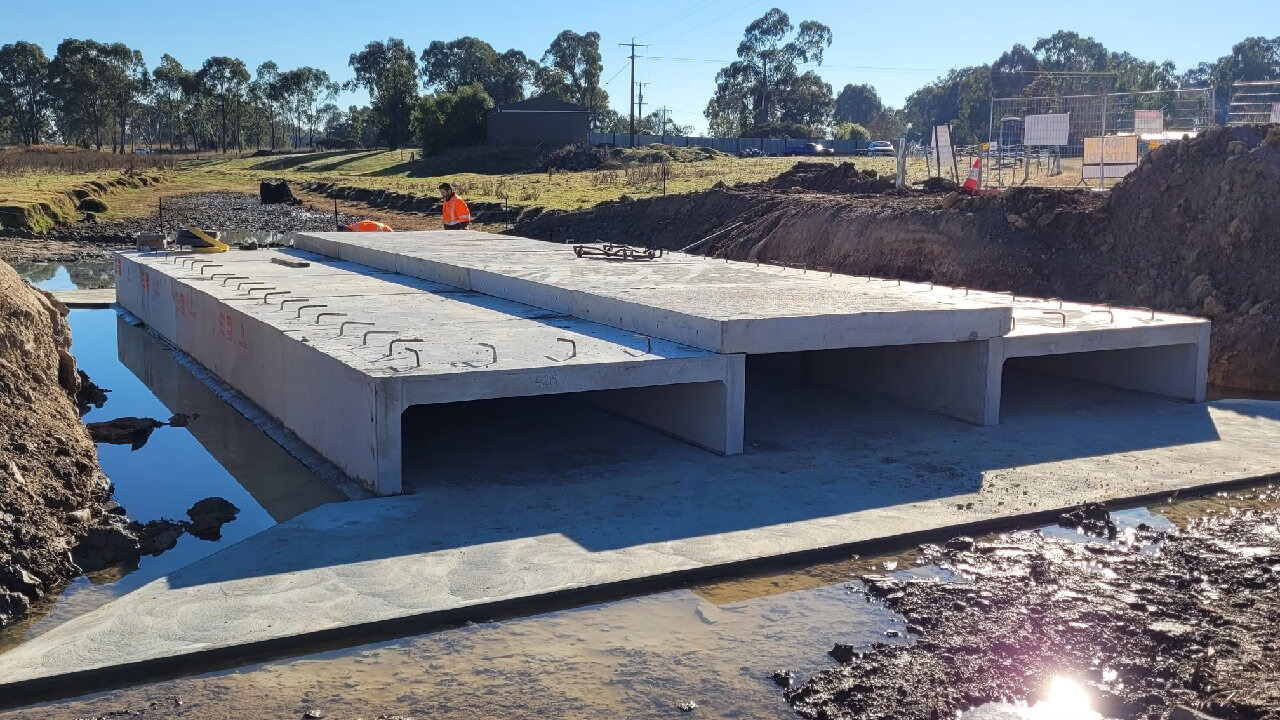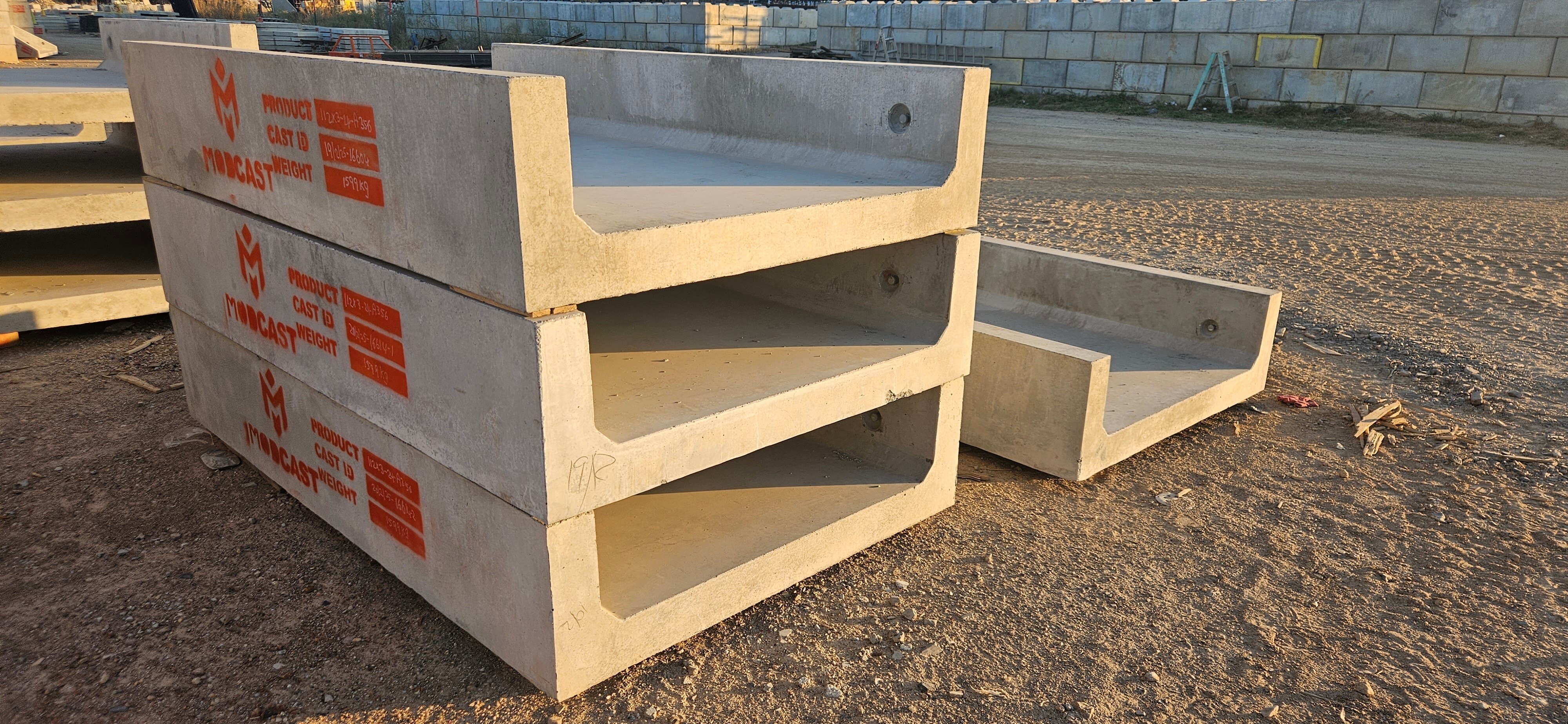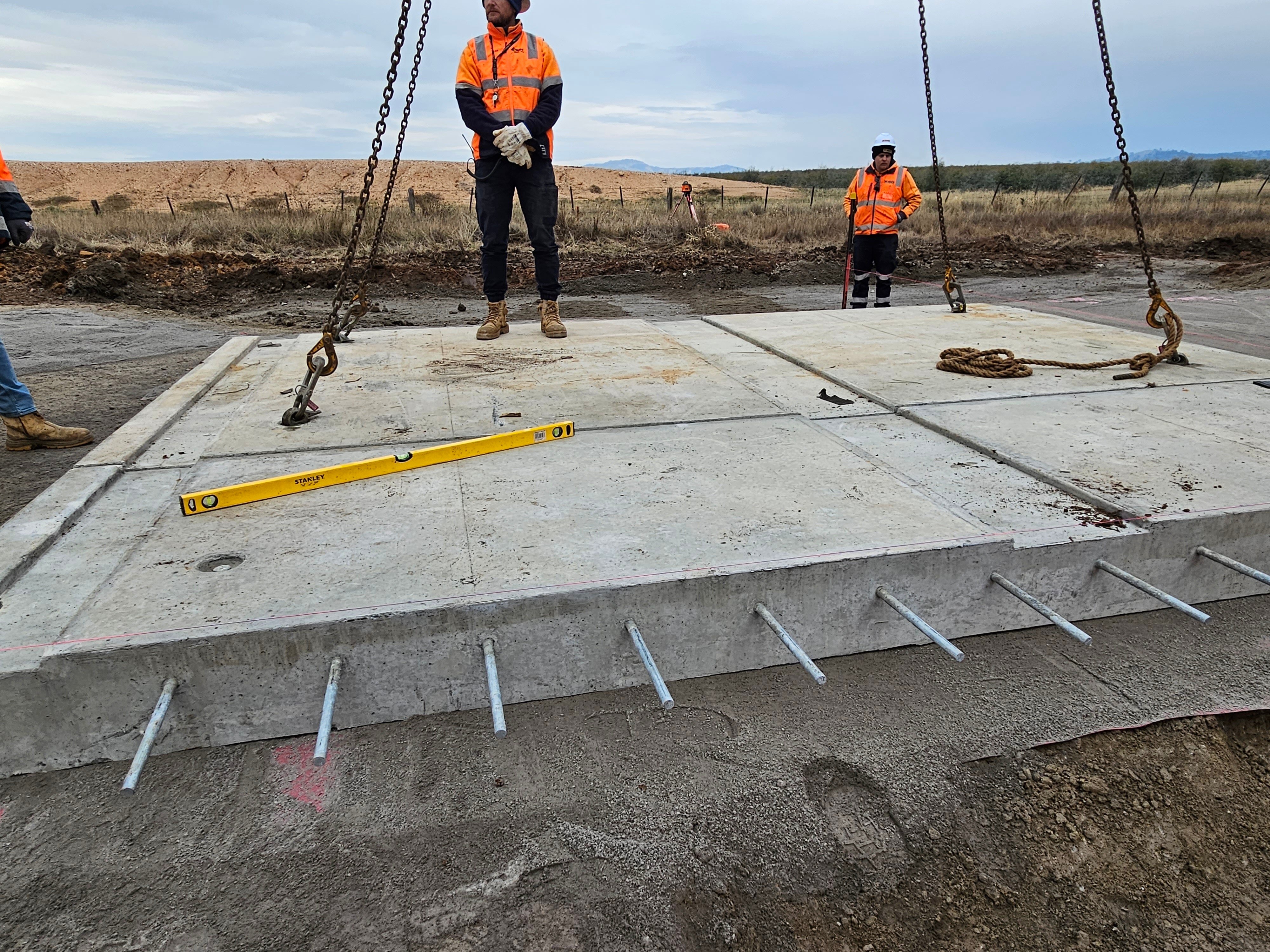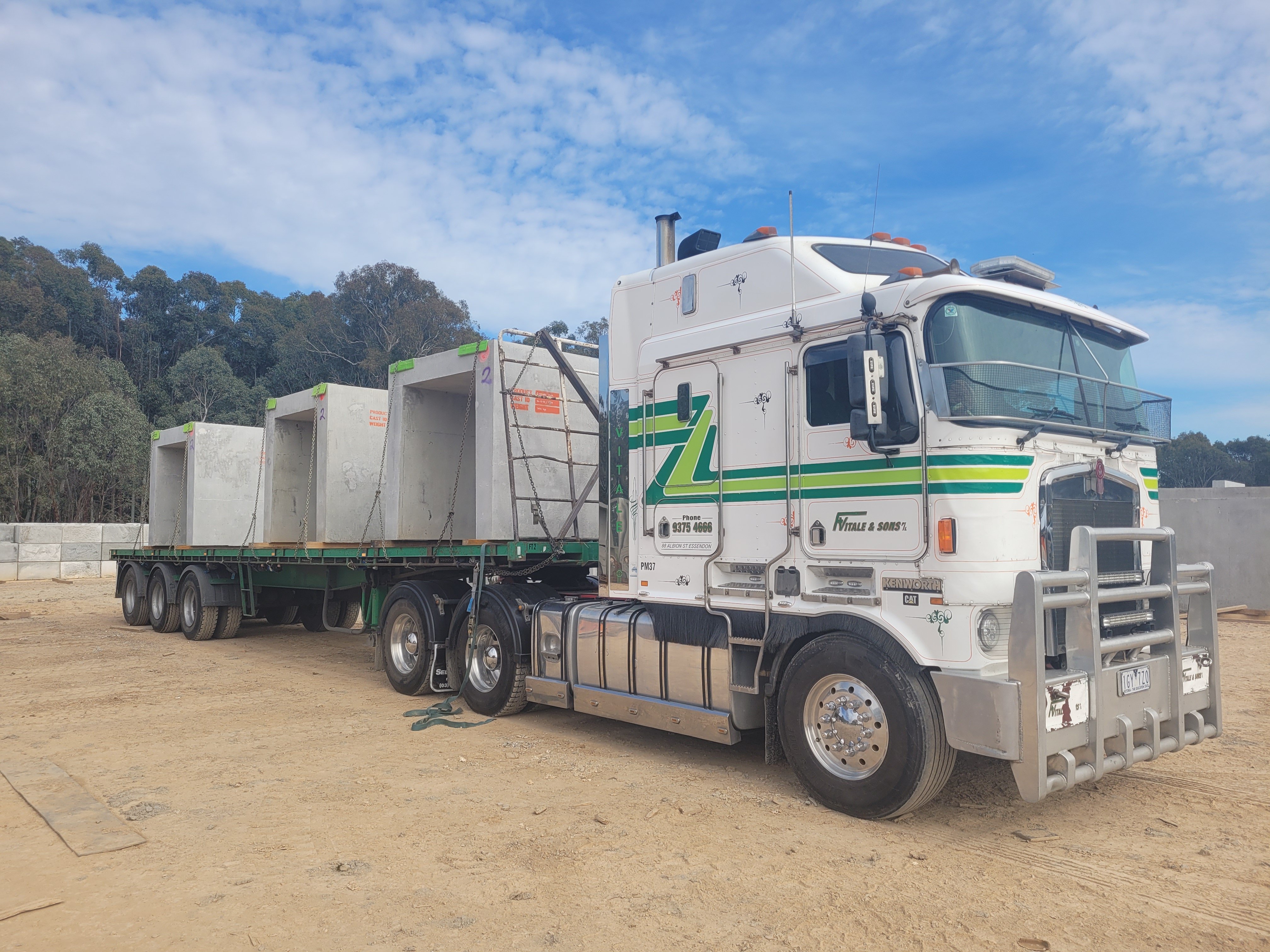Precast box culverts play a vital role in managing water flow under various structures. Proper installation is crucial for their structural integrity and functionality. This guide outlines the step-by-step process for installing precast box culverts.
Please note the following items are a guide only and reference should be made to project specific drawings, specification and standards.
Site Preparation:
- Begin by clearing the construction area of any obstructions, debris, or vegetation.
- Excavate the trench or channel where the culvert will be installed, ensuring it is the correct size and shape to accommodate the precast sections.
- Prepare a stable foundation by leveling and compacting the base material. The type of base material (e.g., gravel or crushed stone) will depend on local soil conditions.
Inspection:
- Inspect the precast box culvert sections for any defects or damage before installation. Ensure that they meet the specified design and quality standards.
Base Installation:
- Prepare the Base: After excavating the trench, prepare the base by leveling and compacting the native soil or the specified foundation material, such as gravel or crushed stone, to create a stable and even surface.
- Add Bedding Material: Place a layer of bedding material, typically sand or fine aggregate, on top of the compacted base. This provides a cushioning and leveling layer for the culvert sections.
- Install Base Slabs: Depending on the design, precast base slabs may be installed. These slabs help distribute the weight of the culvert and ensure proper support. Carefully position them on top of the bedding material, creating the foundation for the culvert. Alternatively, some designs require a cast-insitu base.
Culvert Installation:
- Prepare Grout Bed: Create a grout bed by pouring a layer of grout onto the base rebate. This grout bed should be evenly spread and levelled to provide additional support beneath the culvert legs.
- Lower Culvert Sections: Use appropriate machinery, such as cranes or excavators equipped with lifting attachments, to lower each precast box culvert section onto the grout bed. Ensure proper alignment and leveling of each section to create a continuous culvert structure.
- Joint Sealing: Seal the culvert joints according to the design specification. Common sealing methods include using bitumen tape, sealant compounds, or mortar.
Headwall Installation:
- Position Headwalls: Place the precast headwall sections, if used, at the entrance and exit of the culvert. These sections should align with the culvert openings and secure the ends of the culvert.
- Connect Headwalls: If a multi-part headwall structure has been used, connect and seal them as per the design specification to create a continuous structure.
Backfilling and Compaction:
- Gradually backfill the area around the culvert with suitable fill material in layers. Compact each layer to prevent settling and ensure the culvert remains stable.
- Place additional backfill material on top of the culvert sections to cover and protect them, providing adequate cover material to distribute loads and provide insulation.
Surface Restoration:
- Restore the surface above the culvert, such as the roadway or embankment, to its original condition or in compliance with project specifications. This may involve repaving, grading, or landscaping.
Inspection and Quality Assurance:
- Conduct final inspections to ensure the culvert is properly installed and functions as intended. Check for any signs of settlement, misalignment, or drainage issues.
Documentation:
- Maintain detailed records of the installation process, including inspections, measurements, and any deviations from the design plans.
By following these steps, you can ensure a straight-forward installation of your precast box culverts, meeting both structural and functional requirements. Always adhere to engineering and construction standards specific to your region and project for a safe and reliable installation process. Consulting with experienced professionals in culvert construction is strongly recommended for the best results.





